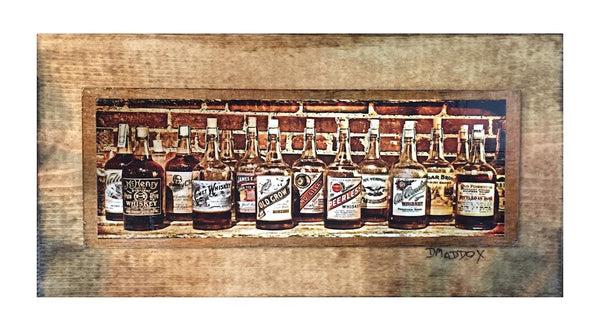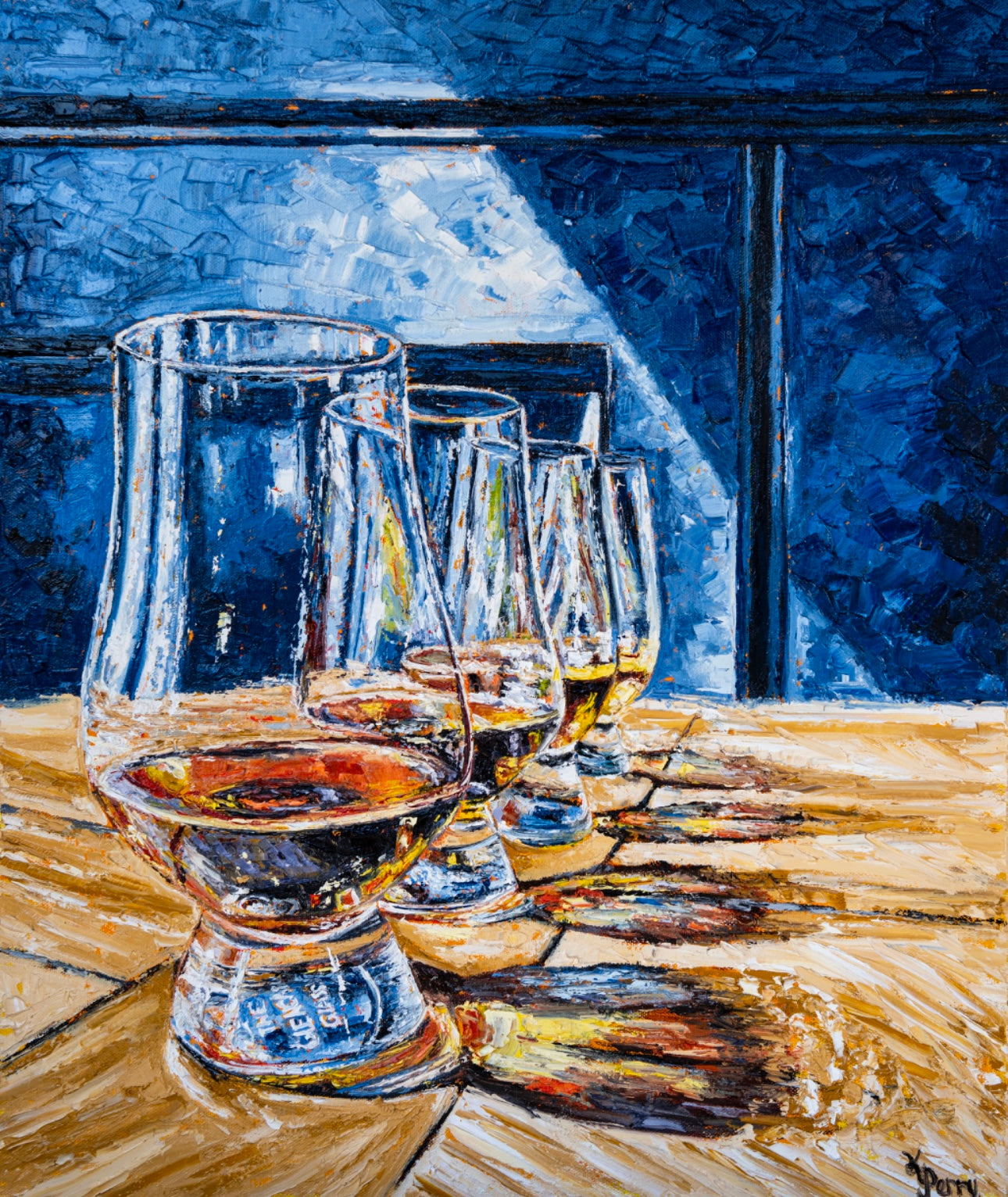Revealing the Appeal of Bourbon Art: A Homage to Craft Distillers
Revealing the Appeal of Bourbon Art: A Homage to Craft Distillers
Blog Article
The Relevance of Whiskey Art in Celebrating Heritage and Craftsmanship in the Beverage Industry
The elaborate relationship in between whiskey art and the party of heritage and workmanship within the beverage market can not be overstated. Via thoughtfully designed containers and labels, bourbon brand names envelop their historical origins and the artisanal skills that specify their production approaches.
The Historical Roots of Whiskey
At the heart of bourbon's allure exists a rich tapestry of historical origins that trace back to old worlds. The beginnings of whiskey can be connected to the distillation methods of the Sumerians and Babylonians around 2000 BCE, where early types of fermented grain drinks began to emerge. It was in the Center Ages that the art of purification evolved substantially, specifically in Ireland and Scotland, leading to the creation of whiskey as we know it today.
The term "scotch" itself obtains from the Gaelic word "uisce beatha," meaning "water of life." This phrase highlights the cultural relevance of scotch in Celtic societies, where it was commonly connected with routines, events, and common bonding. By the 15th century, distillation ended up being an identified craft within monastic areas, leading the way for the establishment of legal distilleries.
As profession routes increased, whiskey's appeal grew, transcending local borders and capturing the interest of connoisseurs worldwide. Whiskey Art. This historic trip shows not just the workmanship behind whiskey production however likewise its important function in social and social contexts, noting it as a considerable beverage throughout history
Artistic Expression in Branding
Scotch branding stands as an engaging junction of creativity and business, where visual identity plays an important function in shaping consumer perception. The appearances of whiskey tags, product packaging, and advertising and marketing products show not only the brand's tale however likewise its core values and heritage. With artistic expression, distilleries convey a story that reverberates with consumers, evoking feelings and stimulating connections.
Using shade, typography, and images in branding serves to set apart products in a saturated market. As an example, standard motifs may evoke a feeling of authenticity and workmanship, while modern layouts can represent innovation and forward-thinking. This tactical imaginative direction boosts brand name recognition and commitment, allowing customers to forge a personal partnership with the whiskey they select.
Moreover, creative expression in branding often offers as a party of regional heritage. Distilleries often integrate neighborhood symbols or historic referrals into their styles, developing a local color that welcomes customers to take part in a more comprehensive cultural experience. Eventually, the creativity behind whiskey branding not only enhances visual charm yet also enhances the general story of the brand name, promoting a deeper admiration for the craftsmanship and heritage embedded in each container.
Workmanship in Container Design
The artistry obvious in bourbon branding expands past aesthetic identification to encompass the craftsmanship included in bottle style. Each bottle functions as a vessel not just for the spirit within, but also for the story it tells about its custom, high quality, and beginning. The style process navigate to these guys requires precise attention to detail, as components such as product, closure, and shape contribute considerably to the overall perception of the bourbon.
Workmanship in container style involves selecting high-quality glass that can boost the scotch's color and clarity, while additionally supplying a responsive experience for the consumer. The silhouette of the container need to be both practical and aesthetically enticing, usually showing the heritage of the brand. Several distilleries select distinct shapes or printed logos that stimulate a sense of authenticity and history.
Moreover, the tag style and typography play a critical role in connecting the brand's story. Whiskey Art. A well-crafted container not only captivates the customer's eye however also enhances the brand's dedication to high quality and custom. By doing this, the craftsmanship of container design ends up being an important facet of the whiskey experience, combining artistry with an extensive regard for heritage
Cultural Value of Whiskey Art
Commemorating tradition and workmanship, the cultural value of whiskey art goes beyond plain looks, intertwining with the social and historic narratives of the regions where it originates. Each container acts as a canvas, portraying the one-of-a-kind tales, folklore, and customs that have actually formed local whiskey-making methods. The detailed designs commonly reflect the heritage of the distillers, incorporating signs and concepts that reverberate with the culture and values of their neighborhoods.

On top of that, bourbon art plays an essential duty in public gatherings and celebrations, working as a concrete link between people and their shared experiences. By valuing the artistry in scotch packaging, consumers grow a much deeper understanding and respect for the craft, eventually improving their pleasure of the drink itself.
Modern Trends in Bourbon Presentation
Recently, the discussion of scotch has actually developed to show modern preferences and trends while still honoring typical workmanship - Whiskey Art. Distilleries are progressively concentrating on visual elements that boost the overall drinking experience, connecting the space in between heritage and modernity
Cutting-edge container designs have emerged, commonly including lasting products and creative tags that inform engaging tales. Many brands now collaborate with local artists, infusing their products with distinct aesthetic expressions that resonate with customers. Additionally, limited-edition launches are usually packaged in collectible containers, including worth and appeal for lovers.

Final Thought
In final thought, scotch art serves as an important channel for expressing the heritage and craftsmanship inherent in the drink sector. Via complex branding, ingenious bottle styles, and culturally considerable artistic elements, bourbon brand names successfully honor their traditions and attach with customers.

Craftsmanship in bottle layout includes selecting top quality glass that can boost investigate this site the bourbon's shade and clarity, while additionally giving a tactile experience for the consumer. In this means, the craftsmanship of container style becomes a vital facet of the whiskey experience, combining creativity with a profound regard for heritage.
In final thought, whiskey art offers as an important avenue for revealing the heritage and workmanship intrinsic in the beverage sector.
Report this page